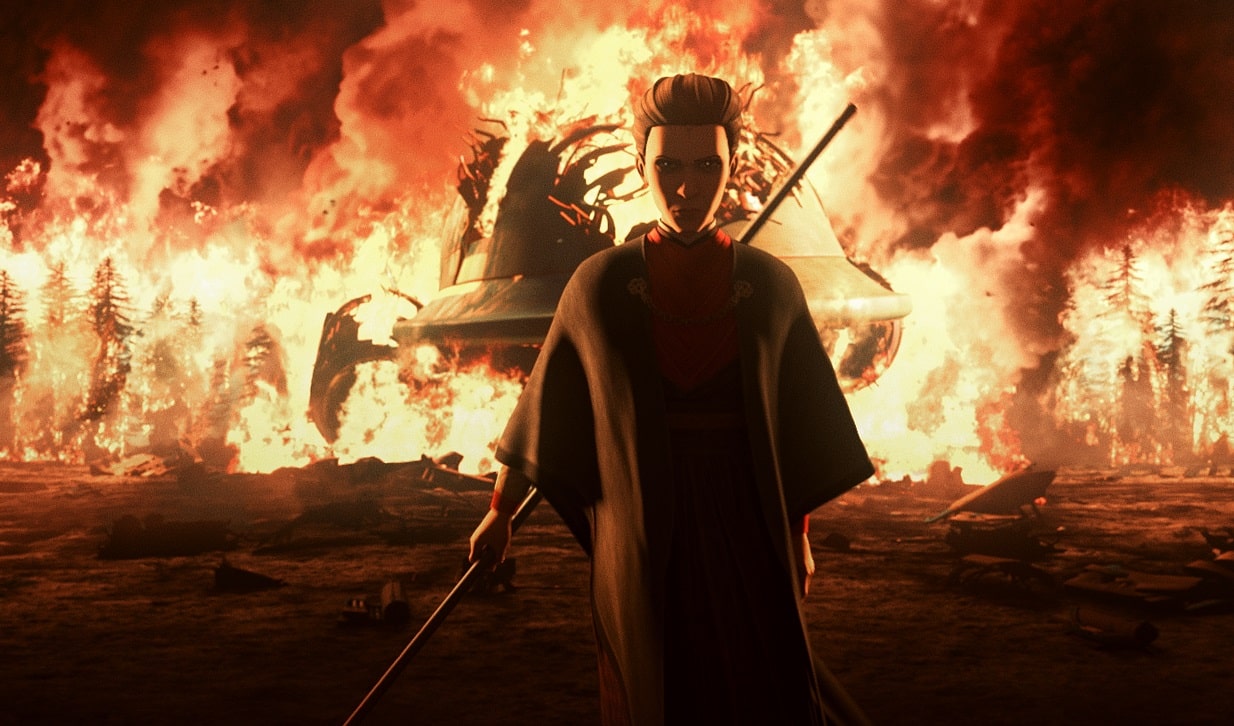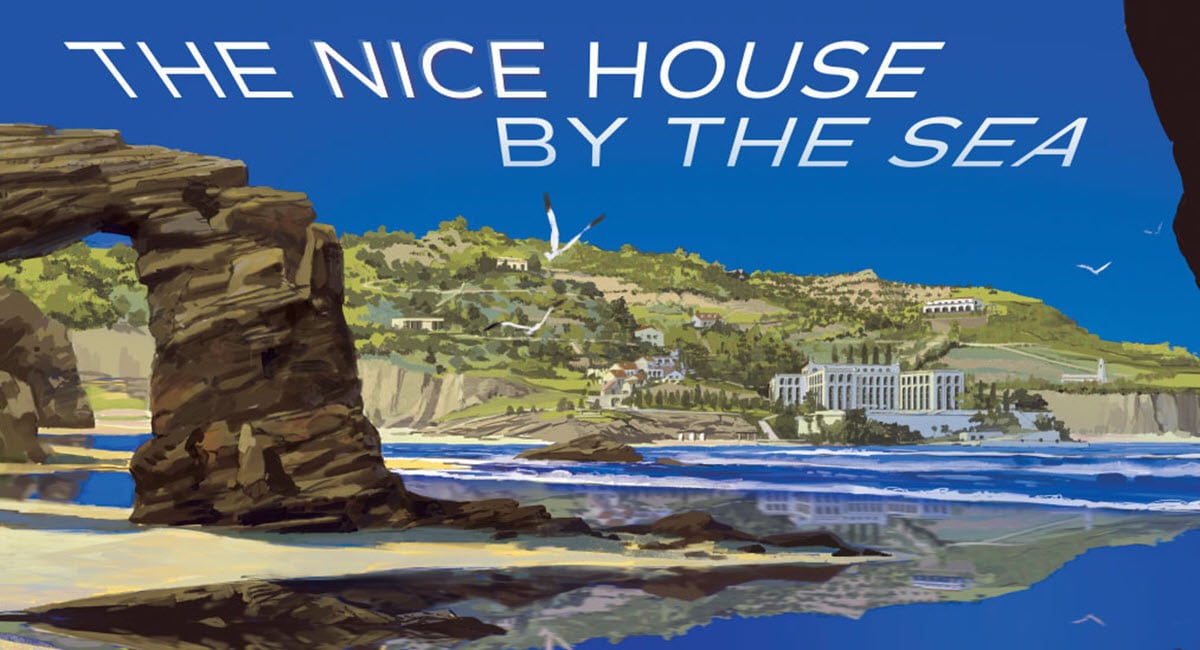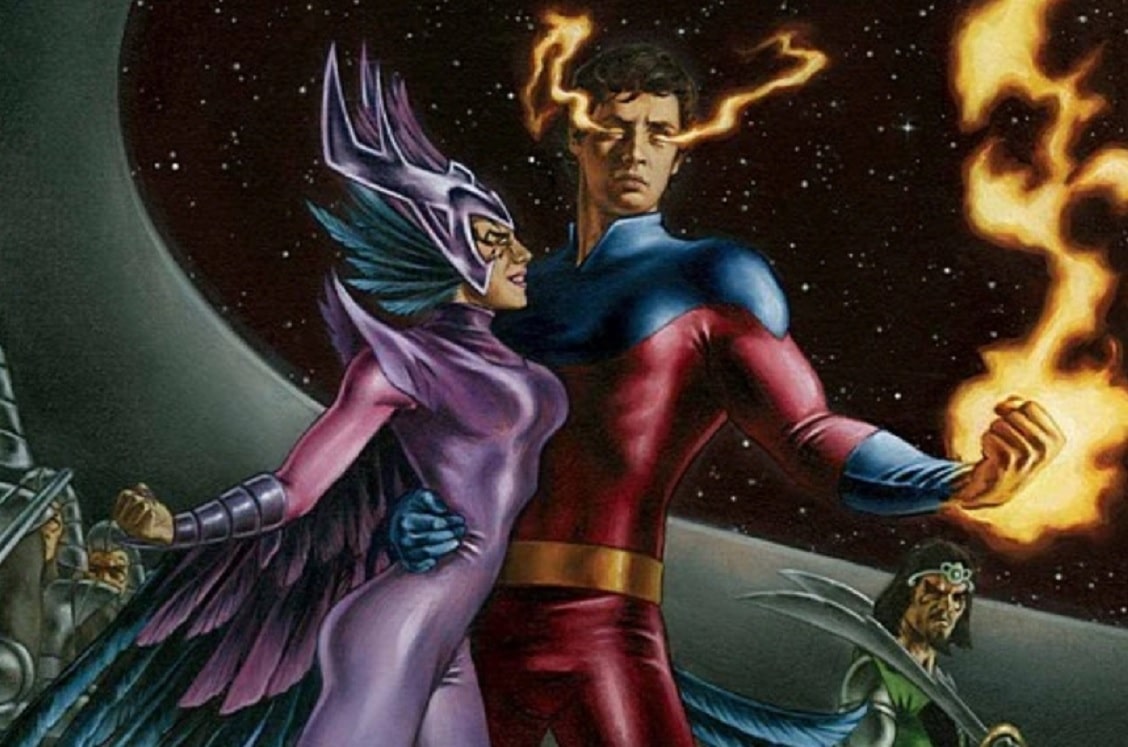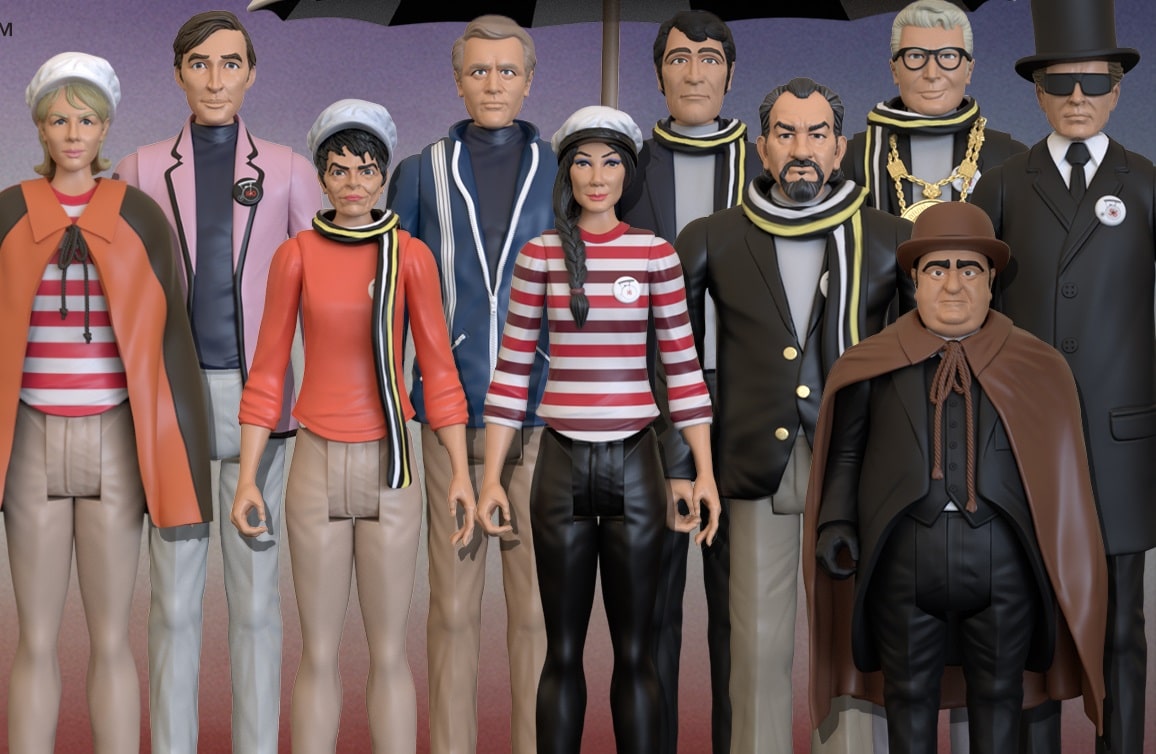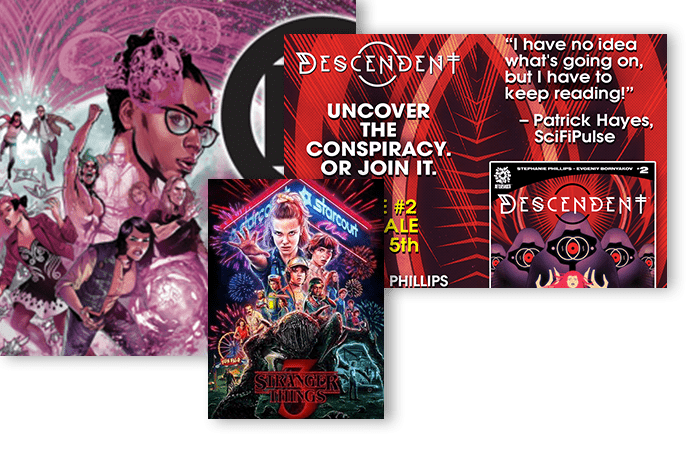The latest Marvel Rundown highlights a week of endings and beginnings for the publisher. First, a pair of Avengers-related titles wrap up with the final issues of West Coast Avengers and the Avengers: No Road Home weekly epic. Do the finales satisfy or leave us wanting more? Then, War of the Realms marches on with the first issue of the War Scrolls miniseries. The event tie-in features four stories, including a new Howard the Duck tale by Chip Zdarsky and Joe Quinones. Finally, we take a look at the latest Star Wars miniseries, the Jody Houser-written TIE Fighter! Reviews and discussions abound – don’t miss the latest installment of The Marvel Rundown!
 West Coast Avengers #10
West Coast Avengers #10
Written by Kelly Thompson
Illustrated by Moy R.
Colored by Trionna Farrell
Lettered by VC’s Joe Carmagna
Cover by Gang Hyuk Lim
Joe Grunenwald: Friends, we’re here today to mark the ending of the latest iteration of the West Coast Avengers. The team featured an odd assortment of characters that unfortunately couldn’t seem to find a big enough audience. Sam, AJ, was the final issue of the series a satisfying conclusion?
Samantha Puc: You know, I never expected anything too dramatic or life-changing from this run, which turned out to be for the best. These 10 issues of West Coast Avengers were fun and had some great moments, but it’s kind of nice to see the series go out on a high note.
AJ Frost: The West Coast Avengers were always a motley bunch, but it’s sad to see their escapades end prematurely. Throughout the run, Kelly Thompson has done a wonderful job of balancing some of the lighter aspects of the book while also adding some more serious depth to Kate Bishop and crew. As Sam said, ten issues isn’t a long run, but it’s nice to see the creative team end at a spot that feels natural. I’m sure we’ll see this crew again soon.
Grunenwald: It definitely didn’t feel like this was an ‘ending,’ which I thought was nice. Even the resolutions that we get still leave avenues open for future stories. I like the idea that this team could pop up in random places to baffle and amuse again. And I also appreciated that, as essentially a continuation of Thompson’s run on Hawkeye, we got some closure (or as close to closure as we’ll likely get) for some of the dangling threads from that series.
Puc: Agreed. I can see potential spin-off series coming from this final issue, which is fitting because this crew is such a big group of misfits. Although I’m definitely not into Quentin and Gwenpool, I could go for a Gwenpool and Jeff series, if I’m being honest.
Frost: Gwenpool was definitely a highlight of the series. Too bad she’s a little too niche to hold her own in a lot of ways. That kind of meta-humor shouldn’t just be tolerated for male characters, ya know?
Puc: LOUDER FOR THE FOLKS IN THE BACK, AJ!
Grunenwald: I loved Gwenpool’s solo series and would love to see it return someday. I agree, Sam, that I don’t buy her with Quire, but could definitely get into further adventures with her landshark.
Frost: From the jump, landsharks are what stick out most for me from this whole series. They should definitely be integrated more into the whole of the Marvel universe!
Grunenwald: If anything I wish the series had leaned more into that silliness. I was hooked from the introduction of BRODOK at the end of the first issue, and landsharks aside I don’t know that Thompson and Co. ever achieved that level of ridiculousness again.
Puc: I agree! This series was fun overall but I loved that absurdity and wanted a lot more of it. The big revelations about Kate’s mom almost felt out of place.
Frost: That silliness was in some ways a wonderful hearkening back to the ludicrousness of the Silver Age. This book was so profoundly proud to be silly that it was a wonder it could last as long as it did. But, maybe it was all a little too on the nose for the general comic populace.
Grunenwald: This series had a string of artists during its brief run, with Moy R. and Triona Farrell on art chores for the final issue. What’d you think of their work here?
Frost: I’ve always found the art of this book to pretty outrageous and imaginative. Pretty par for the course here, then, though that is not a detractor by any means. The art throughout is action-packed, just the way an Avengers book should be. It was great to see the little moments where the characters were allowed to breathe for a bit too.
Puc: I’ve liked all of the art on this series and as Thompson notes in her letter at the back of the issues, Farrell’s colors are just tremendous.
Frost: Yes! Those colors are like a Los Angeles sunset!
Grunenwald: All of the artists have had a similar flavor, but Farrell really did hold everything together nicely. Any final thoughts on this issue, or the series in general? I know I would’ve liked to see it go on longer, but at the same time, in a super-crowded market, Thompson and team got two trades worth of material out of the most oddball assortment of characters I can think of, which isn’t bad at all.
Puc: I’m bummed to see it go but I’m also excited to see where these characters end up next. I worry that if the series had gone on for too long, it would have lost its charm, if that makes sense. I’m ready to deliver my final verdict, which is a firm BUY. That said, if you prefer trades, I respect that and encourage you to pick up BOTH volumes of West Coast Avengers.
Frost: I agree. This is a BUY from me. Go out and have a little fun. That’s what these types of comics are all about!
Grunenwald: Thirded – it’s a BUY for me as well. This was a damn fun series and I’m sad to see it go, but excited for what the team and the creators do next.
Final Verdict: AJ, Samantha and Joe award West Coast Avengers #10 a BUY!
 Avengers: No Road Home #10
Avengers: No Road Home #10
Written by Al Ewing, Mark Waid and Jim Zub
Illustrated by Sean Izaakse
Colored By Marcio Menyz and Erick Arciniega
Cover by Yasmine Putri
Lettered by VC’s Joe Sabino
Reviewed by Alexander Jones
Avengers: No Surrender proved that the property could sustain a long-running weekly title. Even though the sequel series, Avengers: No Road Home started strong, it didn’t take the miniseries too long before it dragged in the middle chapters. Thankfully, the title still carries a strong ending with the series finale. Avengers: No Road Home #10 thins out the cast for the first portion of the book and pits The Vision in a final confrontation against Nyx. The conclusion of the series uses Marvel’s history and ventures into a space inside the realm of the publisher itself. This chapter incorporates a fascinating metatextual conclusion that could potentially alienate readers who haven’t been following the property for an extended period of time.
Using The Vision as the protagonist for the final chapter of the series is a little strange as most readers would expect to see someone like Hercules in the limelight. However, The Vision is an integral Avengers character and the spotlight on him is a welcomed, albeit slightly forced change of pace in the narrative. While Nyx is not a particularly strong villain for the overall series, she does present an interesting design and an imposing physical threat. The overall conflict in the issue is surprisingly brief and similar to the first series there is a lot of downtime in the issue where readers reflect with characters by the conclusion of the title.
Sean Izaakse’s pencils take some huge chances in the final battle between The Vision and Nyx. Seeing the two head towards a confrontation was a surprising element of the comic. The panel composition and anatomy of the pages with The Vision towards the front half of the issue show that Izaakse’s work carries an impressive level of ambition. The final brawl is loaded with visual surprises that will delight longtime Marvel fans. Sometimes, Izaakse’s pencils have a bad habit of coming off as too simplistic. There are a couple of moments where his line can be lacking the detail that comic books published from Marvel should require. Characters have blank expressions and figures can be too loose.
Avengers: No Road Home #10 is a solid conclusion to a mini-series that underwhelmed. The title puts some of the supernatural elements to the forefront during the payoff of the comic. The introduction to the Marvel mythology was an inspired choice. Also, the characterization and writing for the different Avengers by Mark Waid, Al Ewing and Jim Zub towards the last section of the issue were formidable. The title really does feel like it has a solid ensemble cast. Despite a few technical flaws, Izaakse’s pencils come off inspired.
Final Verdict: Avengers: No Road Home #10 is a solid BROWSE that easily merits a purchase from a big Avengers fan.
 War of the Realms: War Scrolls #1
War of the Realms: War Scrolls #1
Written by Jason Aaron, Josh Trujillo, Ram V., and Chip Zdarsky
Illustrated by Andrea Sorrentino, Ricardo López Ortiz, CAFU, and Joe Quinones with Joe Rivera
Colored by Matthew Wilson, Felipe Sobreiro, Brian Reber, and Rico Renzi
Lettered by VC’s Joe Sabino
Cover by Alan Davis, Mark Farmer, and Matt Hollingsworth
Alexander Jones: Joe, War of the Realms: War Scrolls #1 is an entry loaded with content. I was actually excited to read the chapter after checking in on War of the Realms #2. My opinion of the event is starting to turn around really quickly. What were your first impressions of Daredevil’s sight, the return of Howard the Duck, and War of the Realms: War Scrolls #1 overall?
Joe Grunenwald: If the true nature of the event started to take shape in War of the Realms #2, then War Scrolls #1 was our first look at what this event looks like in action. Like any book that has more than one story in it, I found War Scrolls #1 to be something of a mixed bag, but the majority of the issue was really entertaining. What did you think?
Jones: I agree with you. I think the stories are really solid in the collection. The Daredevil chapter is very good and I really like Jason Aaron’s approach to Daredevil. This status quo, in particular, feels like it could stick around after the crossover. Andrea Sorrentino was doing some things I have never seen from him before. The coloring on Sorrentino’s art from Matthew Wilson was beautiful.
Grunenwald: The DD story definitely feels the most cohesive with the rest of the event, which makes sense with Aaron behind the keyboard. I generally really love both of the artists on this story, but here I found the artwork to be somewhat uneven. The flashback with Daredevil and Thor meeting was perfect, but the present-day scenes just felt off to me for some reason. I may just be too used to seeing Sorrentino colored on Gideon Falls by Dave Stewart—that book uses such a different palette compared to Wilson’s brighter colors on this story. Sorrentino and Wilson are both extremely talented artists, but the combination of the two didn’t quite work for me.
Jones: I actually really liked it. There was a pretty big juxtaposition for the two styles. I can understand how it wouldn’t be everyone’s favorite Sorrentino artwork. Aaron really got that Daredevil paranoia that I find writer Chip Zdarsky’s scripts to be lacking. Aaron’s writing also melds the Asgardian lore into the Daredevil surroundings with ease. I think the segment carries a really nice pulpy vibe. The Warriors Three story was where the issue lost me. Do you have any thoughts on that chapter?
Grunenwald: I appreciated the simplicity of the Warriors Three/Four story’s plot and the humor of it. The standout there for me was the art from Ricardo López Ortiz and Felipe Sobreiro. We (or at least AJ and I) often bemoan the ‘same-ness’ of a lot of Marvel artist’s styles, and Ortiz’s linework and Sobreiro’s colors on the second story were completely outside of that box. It was wild and I loved it. The art helped elevate what was an otherwise ‘just okay’ story into one I would want to read again.
Jones: The art was interesting but sometimes the distorted nature of the cartooning put me off. Also, I thought some heroes were acting a little out-of-character and goofy. The combination of those two elements really threw the issue off for me. There are some mildly amusing moments. Ortiz’s art has moments of brilliance. Do you have anything to add about that story before moving onto the Wolverine and Punisher section?
Grunenwald: Not particularly. The Wolverine/Punisher story was, for me, the issue’s weakest entry. It was cute enough, but if you want to talk about heroes acting out-of-character, Wolverine gives a downright inspiring speech to a group of adorable moppets. In fact, it’s basically the same speech Captain America gave in an issue of Waid and Samnee’s recent run on the character. This was a very short story so I can’t hold it against the issue too strongly, but I found it ultimately forgettable both from a writing and an art perspective.
Jones: I found the Wolverine/Punisher story to be charming. Looking back on the issue I can appreciate what you said about the heroes acting out of character. Wolverine and Punisher’s playful dialogue at the end actually got me interested in the entry. I think the status quo between them was explored first in War of the Realms #2. Also, I love CAFU and think his work here was pretty entertaining. His darker art counterbalanced the lighter narrative really well. It sounds like we almost completely disagree on this!
Grunenwald: I didn’t find the art to be particularly bad, but of the four stories I thought CAFU and Brian Reber’s was closest to Marvel’s aforementioned ‘house style’. Which is not necessarily a bad thing, but it didn’t stand out to me in any meaningful way like the other artists’ work did.
Jones: I’m a mark for that house style I guess. I still found the panel composition and slick fight scenes to be impressive. I think CAFU even gets a few solid expressions in the story as well. There are some panels that look slightly bland. Do you have anything left to say about the story before we move onto what I anticipate will be your favorite chapter?
Grunenwald: If you mean the story that made me want to read this issue, I’m ready to talk about it. It’s only four pages, but Chip Zdarsky, Joe Quinones, and Rico Renzi deliver hard on a new Howard the Duck story. It reminded me of everything I loved about their original run on the character and was a nice chance to check in on some characters we haven’t seen in a bit. I also definitely laughed out loud a few times.
Jones: This entry was not my favorite. I think the script got really weird, really fast. I would have liked a more serious story or something to ground and reintroduce Howard more. It was nice seeing so many elements of the original run come back like you mentioned. I think Joe Quinones might be one of my favorite current Marvel artists and this chapter was beautiful for four delightful pages.
Grunenwald: “Really weird, really fast” is exactly why I loved it. And I don’t know how much more grounded you can get than ‘needing to make money to pay rent.’ But I can see how this story wouldn’t be for you. Any other thoughts before we render our verdicts on this book?
Jones: We went pretty in-depth on this issue. I’m going with a BROWSE. I thought the anthology was solid, but not perfect. There are definitely some fun moments to be had with these stories.
Grunenwald: It gets a BROWSE from me as well. Overall it’s a pretty strong package, but it’s probably not going to be for people who aren’t following War of the Realms already (though the Howard story barely has anything to do with it).
Final Verdict: Joe and Alexander say BROWSE!
 Star Wars: TIE Fighter #1
Star Wars: TIE Fighter #1
Written by Jody Houser
Illustrated by Rogê Antônio and Michael Dowling
Colored by Arif Prianto and Lee Loughridge
Lettered by VC’s Joe Caramagna
Cover by Giuseppe Camuncoli & Elia Bonetti
Reviewed by AJ Frost
One of the most interesting sequences of the much-maligned but actually quite fun Solo: A Star Wars Story is a gritty trench battle from the Empire’s point of view. The military machine of the Galactic Empire, while often set up as heartless and evil (which it surely is in many respects), is also fascinating because fans of the franchise have often been put into positions of rooting for the Rebels. The faceless stormtroopers, specialized commandos, and other cogs of the Imperial machine are always placed in ill-suited pursuits of our heroes, and thus, are portrayed as one-sided goons in a despot’s quest for ultimate galactic power. And because of this characterization, meaningful media that explores the delicate interpersonal experiences of those who fight and die for the Empire is underrepresented in the vastness that is Star Wars multimedia. It is for this reason why Jody Houser’s miniseries TIE Fighter will be regarded as a much-needed glimpse into the hearts of those who fight for the Empire.
The first issue of TIE Fighter works well because it knows clearly what it is: an expository launch vehicle for a larger arc that connects the fates of two factions who will not yield to the others’ ideology. Set shortly after the pivotal Battle of Hoth that sees the Rebel Alliance at its nadir, the book follows the exploits of Shadow Wing, a young but ferocious unit of pilots who destroy Rebel craft with ease. What sets this particular exploration of the Empire apart is the introduction of a romantic relationship between Imperial Troops—Ganem Kahi and Zin Graw—and the self-awareness that, though these pilots are essential to the Empire’s galactic conquest, they are, ultimately, dispensable. This existential examination of Imperial troops is something that is usually left for stories about Jedi finding their destiny or a dreamer searching the stars for glory. Here, we see that even purported villains have their own conceptions of fate; it is a refreshing take, to say the least.
Houser’s most genius move here is to use the audience’s preconceived notion of the Empire and turn it on its head. The conversations that happen throughout the book are not unlike those that we’ve so often heard Rebel partisans say: the war is going on too long; so many lives have been lost; peace to the galaxy is coming soon. Of course, all of this talk is through the lens of the conquerors, the zealots of uniformity and subjugation. Seeing some (but not all) of the Shadow Wing’s pilots wrestle with these fundamental questions about station, loyalty, and forthrightness is critical at this moment of Star Wars media expansion, where the constant need to see everything from the Rebel standpoint can get laborious in its constant refrain of freedom fighters versus a heartless regime (Battlefront II, looking at you!).
It wouldn’t be a Star Wars yarn without space battles, and artists Rogê Antônia and Michael Dowling deliver. The artwork is gorgeous and gets to the essence of what makes Star Wars so mesmerizing: the vastness of space coupled with a universe that feels alive. The designs of the Imperial costumes and fleet are on point and these pages sparkle with energy.
TIE Fighter #1 satiates fans old and new alike by taking us into the heart of the Empire. But even more so, it allows us to inspect the heart of an Imperial trooper. Seeing how these people behave with their masks off allows not only the story to breathe, but the reader as well. This isn’t your typical Star Wars fare, and it’s surely going to be an amazing ride.
Final Verdict: BUY.
Next week, Tini Howard explores the relationship between Thanos and Gamora in a new miniseries!
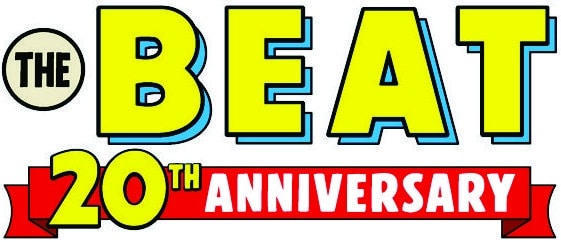
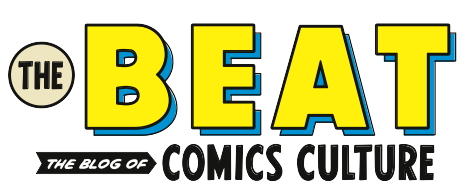
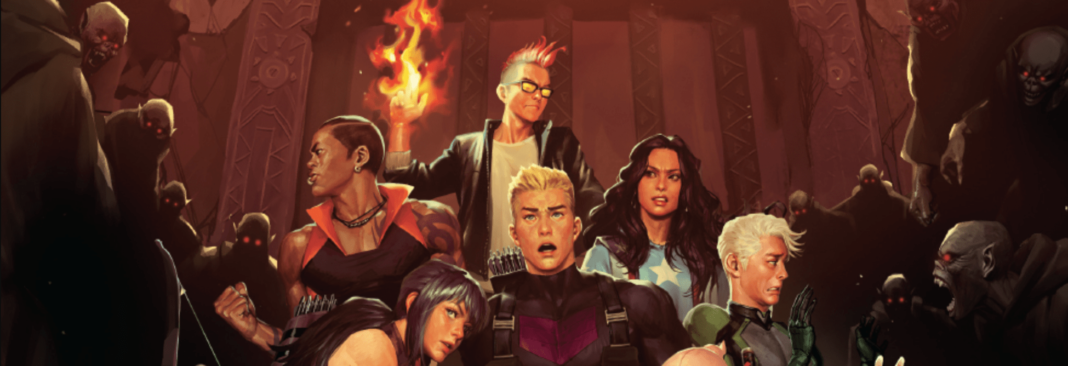
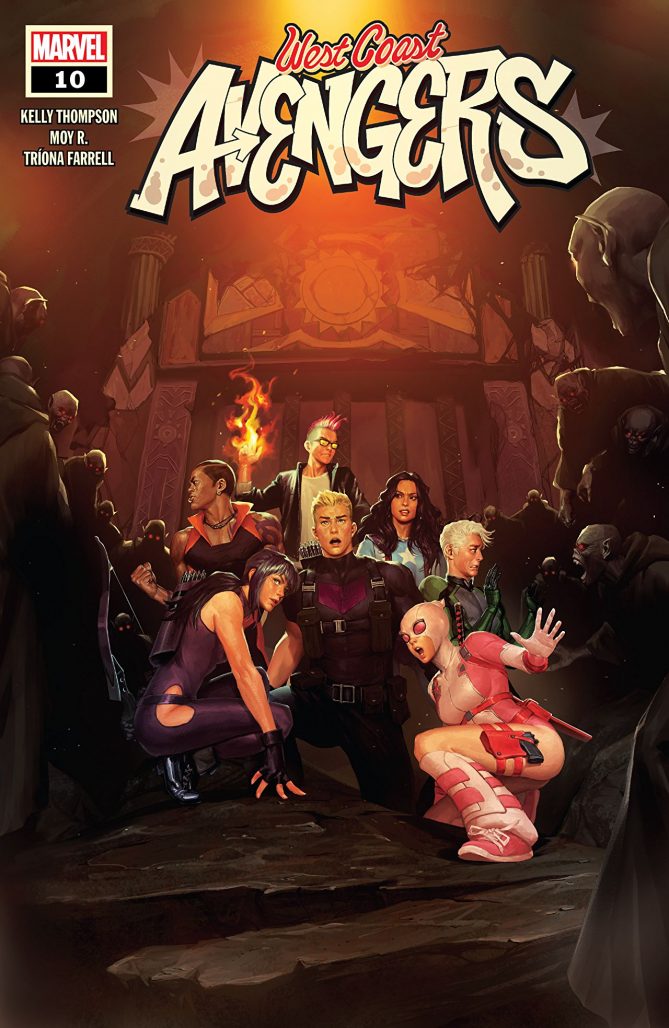 West Coast Avengers #10
West Coast Avengers #10
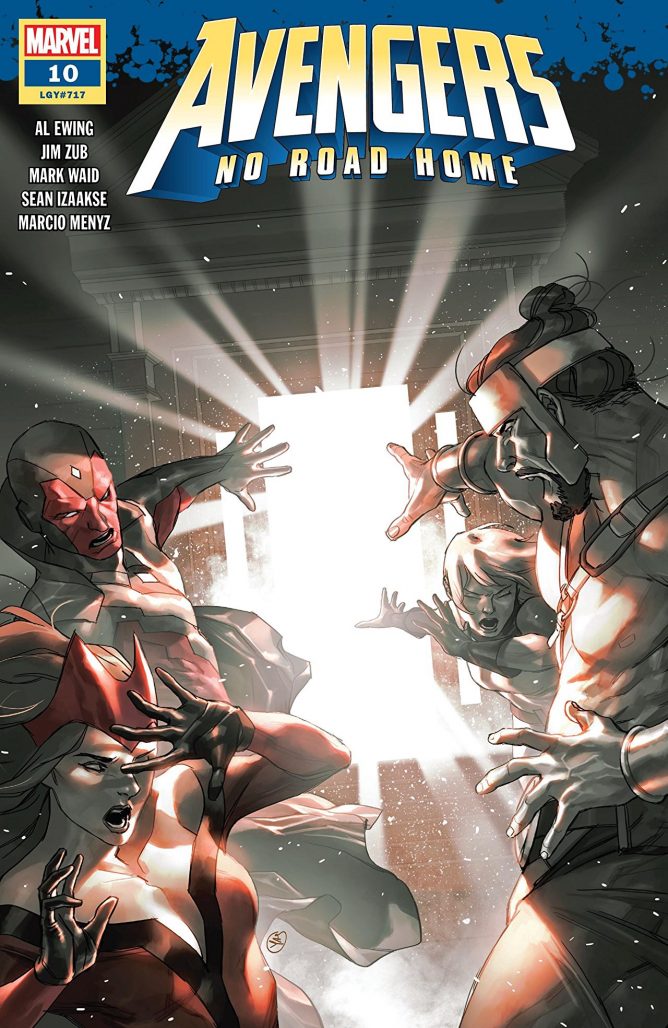 Avengers: No Road Home #10
Avengers: No Road Home #10
 War of the Realms: War Scrolls #1
War of the Realms: War Scrolls #1
 Star Wars: TIE Fighter #1
Star Wars: TIE Fighter #1

